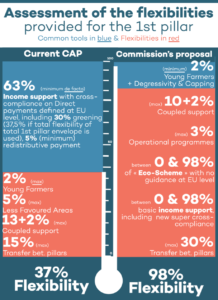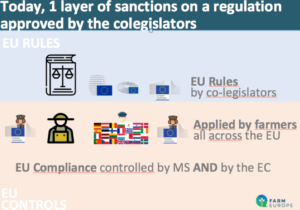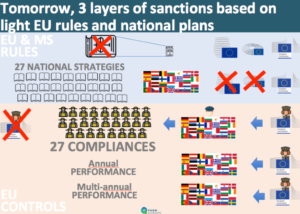FICHE
FOOD CHAIN, NUTRITION AND WELLBEING
The European food chain is facing a big challenge, which is to find a harmonious and positive relationship between diet and health. This is mainly due to the fact that, the EU agro food model is constantly evolving and improving, and its relationship with health issues is becoming growingly important. This is a key challenge for the future of both agriculture and food industry.
The relationship between science and innovation on one hand and agriculture and food on the other and is perceived mostly in negative terms, or at least in a quite unidirectional way – nutritionissues –, putting aside other elements as important as culture and traditions, sociology, employment and economics, internal market principles, environment, genetics, lifestyles.
Much of the discussions around the issue are quite polarized, sterile and more based in opinions than in science, which doesn’t help any progress on what can be considered the common goal: how to better integrate food and health for the benefit of consumers and society as a whole.
In order to prevent the negative effect of NCD ́s public authorities try to promote different policies and actions with a dubious impact.
If we put it into a European perspective, we have to realize that we participate in a sort of “collage” of measures, mixing European and national initiatives, in different areas, with different aims and ways, that need to be reconsidered. Examples are: national taxes, prohibition of sales, limits to advertising, traffic lights systems (U.K.) as well as French nutriscore model.
Internal market principles – the basis of European integration– have been side-linedwith direct impact on business, free circulation, competition and consumer welfare.
On the prominent role of science: improvements made in terms of food safety in Europe in the last 15 years have to be acknowledged. Both EFSA and the Commission have delivered a sound set of criteria that have created a strong consensus around the best science to inform food safety – and a comprehensive system to evaluate and manage risks.
Science is critical not only because it leads the way for improving human wellbeing, but also because evidence-based science orients political action– or at least should-.
Science is far more than a single discipline. The present “nutrimania” simply puts aside other fields of knowledge like sociology, genetics, physical activity or environment, while multifactorial problems need multidisciplinary approaches. Even when it comes to nutrition focus is more on products (“good” or “bad”) than in diets itself. And as a matter of fact “we eat food, not nutritiens”.
Having said that, the question would be how can Europe improve its decision making in order to take any political action on evidence based science? How can we avoid science to be substituted by opinion when informing political and legal decisions?
– First of all, we need more confidence in our institutions. EFSA must continue to be seen as the reference for excellence in science and food and at the same time, it must be able to better coordinate national Agencies in his effort to align criteria and inform action.
– Another issue: misinterpretation of complex information and a great deal of news and sources makes really difficult to avoid confusion and distress in the public opinion.
– Finally, the way in which debate takes place is not the most constructive one. It seems that each stakeholder sticks to its own position being more interested in counter-arguments and defending specific interests that in finding ways to progress against NCDs through co- operation.
Today, it is urgent to open a debate with all stakeholders and get a broad agreement oncommon objectives: a better and sound healthy lifestyle in Europe, and a firm contribution from the food chain – it is crucial to understand that this is a common issue in which all the members of the chain (consumers, farmers, industry and trade) must work together and united.
At the same, it would be useful to enlarge the role of EFSA to informing the public on where the science stands on key issues. If the objective is to build confidence and a trusty and efficient European legislative framework, one of the challenges is indeed to fight relentlessly baseless « opinions ».


